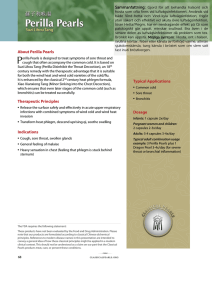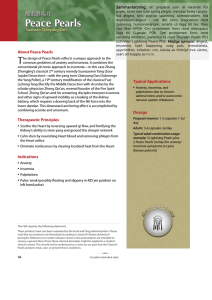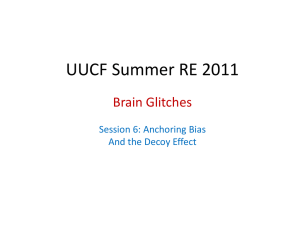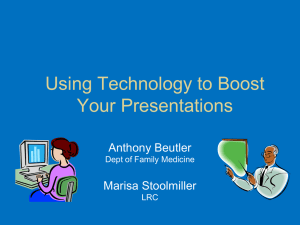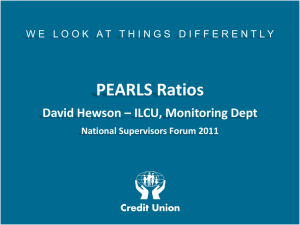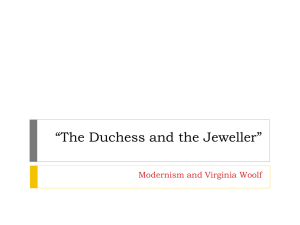PEARLS Powerpoint - Dartmouth Medical School
advertisement
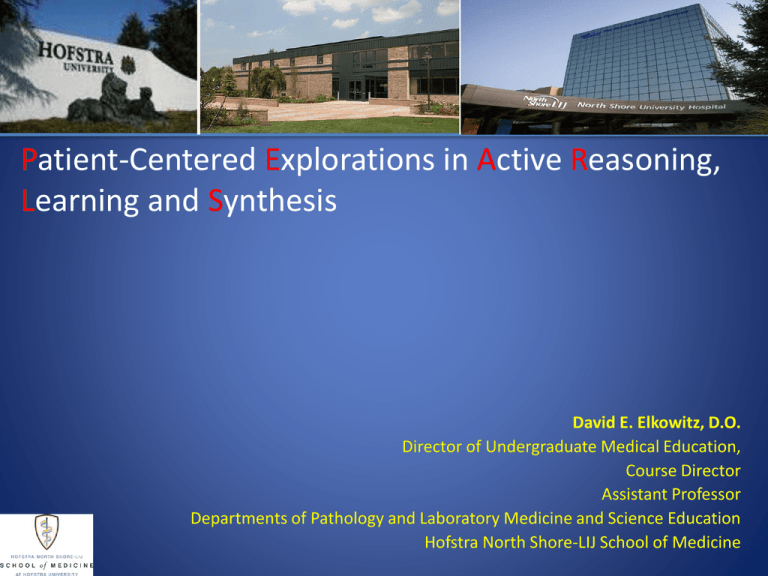
Patient-Centered Explorations in Active Reasoning, Learning and Synthesis David E. Elkowitz, D.O. Director of Undergraduate Medical Education, Course Director Assistant Professor Departments of Pathology and Laboratory Medicine and Science Education Hofstra North Shore-LIJ School of Medicine About our School of Medicine • Located on Hofstra University’s Campus, Hempstead, NY • First allopathic medical school in New York since 1963 • Housed in new, state-of-the-art, 48,000 square foot, Medical Education Center • Offer MD, MD/PhD, and PhD degrees About North Shore-LIJ • Nation’s second largest, non-profit, secular health system • Nation’s 16th largest, integrated healthcare network, and the largest in New York State • Services 7 million people at 16 hospitals on Long Island and in Manhattan, Queens, and Staten Island • 2010 National Quality Forum award winner – National Quality Healthcare Award Mission Statement The School of Medicine, in a culture of community, scholarship, and innovation, is dedicated to inspiring diverse and promising students to lead and transform medicine for the betterment of humanity. Values Community Diversity Scholarship Professionalism Innovation Patient Centered Learning Reflection Humanism Vision GUIDING PRINCIPLES FOR CURRICULUM DEVELOPMENT “Adult learner” environment Focus on learning, not teaching Integration of health, disease Built on experiential/ small and intervention group learning Fully integrated, science and clinical curriculum Early meaningful patient interactions Assessment drives learning Emphasis on scholarship, critical thinking, lifelong learning True to mission, values, drivers Curricular Structure: Spiral Curriculum Content revisited at multiple points in time; increased difficulty, greater depth, consideration of current context Integration • Science to science • Science to clinical • Science to pedagogy • Departments How Will Students Learn? Develop, predict Defend, appraise Examine, contrast Organize, solve Summarize, interpret Name, define “FLOW” EXPERIENCES IN RELATION TO CHALLENGES AND SKILLS High Arousal Anxiety Challenges FLOW Control Worry Apathy Relaxation Boredom Low Low Knowledge & Skills High Pedagogies PEARLS Socratic Style Large Group Small groups with a process expert (studentgenerated content) Small groups with a content and process expert Large groups with a content expert (directorgenerated content) Guiding Principles PEARLS as the Cornerstone PEARLS- Patient-centered Explorations in Active Reasoning, Learning & Synthesis Major way that students address most basic science content Problem-Based Learning/Case Based Learning Hybrid Student-driven, facilitators there to guide process only (not content) Cornerstone for all other weekly session (including Structure) Professional Skills Structural Sciences Basic Sciences Content PEARLS Educational Philosophy • Value learning over teaching • Trust the students to learn much of the factual knowledge outside of class • Active learners every day • Critical thinking, Problem solving & Knowledge in Actionscience that sticks • Societal forces of the times – Decision making under uncertainty – Deliver effective and safe care – Majority of care delivered outpatient setting – Health care teams caring for patients • Hybrid problem-based/case-based learning pedagogy • Students synthesize biomedical science in the context of patient-centered clinical cases with peers • PEARLS relies heavily upon formative assessments to help achieve goals of competency based component of program Pillars Provide Structure to Achieve Goals Of PEARLS Program PEARLS Pillars Goals of PEARLS • PBL/CBL Pedagogy • Group Dynamics • Higher Order Thinking • Leadership, PBL&I • Teamwork • Acquiring knowledge of biomedical sciences, Critical thinking THE PILLARS AND GOALS INFORM ALL ASPECTS OF PEARLS • • • • • • • • Monday Roles: leader, timekeeper, recorder Patient-centered cases Explore issues and Actively Reason through cases to develop learning objectives Mon-Wed Self Directed Learning Wednesday- Synthesize and apply information with peers in group Wed-Fri/Friday repeat for second case Weekend-complete end of week essay • Mondays – Cases strongly lead to LO’s – Role of faculty member is minimal; quiet • Wednesdays/Fridays – Higher order discussions – Faculty can facilitate this using PQ’s or questions to probe critical thinking: • • • • • What exactly is your question? Could you elaborate further? How could we verify if that is true? Can you sketch that for us? What factors make this a difficult problem? Reflection, Integration & Assessment Weeks Monday Check-in Monday AM Wed AM • Self assessment • Reflection Friday AM Mon/Wed/Fri Wrap-up Monday AM • • • • Wed AM Self & group assessment Content & process Facilitator framed component Reflection Friday AM Multiple Perspectives Biologic Science Population Health Patient Society Prevention Case Therapy Course/Case Development Interdisciplinary team 2. Align weekly sessions with vertical content 1. Establish learning objectives 5. Finalize assessment scheme, faculty development 3. Assign LOs & design weekly sessions 4. Determine required resources Evolution of Complexity of Cases • Will cases change in any way over time? • Spend fist 10 minutes generating DDx • Add incorrect information to a case or mismatch – Case states patient has 1st degree heart block but actual EKG has 2nd degree heart block • Leave off goals of cases ? Pillars Provide Structure to Achieve Goals Of PEARLS Program PEARLS Pillars Goals of PEARLS • PBL/CBL Pedagogy • Group Dynamics • Higher Order Thinking • Leadership, PBL&I • Teamwork • Acquiring knowledge of biomedical sciences, Critical thinking THE PILLARS AND GOALS INFORM ALL ASPECTS OF PEARLS PEARLS Development Faculty • Philosophy • Programmatic rules • Journal clubs • Tape review • Simulations • Observation/debrief • Facilitator meetings • PEARLS GO! sessions Student • Philosophy • Programmatic rules • Student leadership roles • Wrap up questions/ assessment • PEARLS GO! Sessions • Outside sessions 6 STEPS TO SUCCESS AS A PEARLS FACILITATOR As a facilitator, your role is to promote student development of PEARLS course expectations by: Knowing the PEARLS expectations for the course in which you are facilitating. Having a solid understanding of each of the PEARLS expectations and how they relate to the PEARLS pillars/goals. Being able to describe and recognize a higher order discussion. Assessing your group during each session along the PEARLS pillars and goals to see which expectations they are meeting and which ones they are falling short on. Posing questions to group to allow them to self-discover areas needing improvement= “framing” the wrap-up. Pushing your group through wrap-up framings and role modeling to achieve excellence in the deficient areas. Knowing the PEARLS Developmental Expectations Students were asked to be able to demonstrate the following: •Explain the goals and pillars of the PEARLS program •Adhere to the ground rules and recognize that they are informed by the goals and pillars •Consistently arrive on time for sessions •Generate good learning objectives •Consistently arrive prepared for sessions •Contribute to good group dynamic •Utilize the goal of the case to guide scope of discussion •Utilize student roles of leader/timekeeper/scribe to organize sessions Knowing the PEARLS Developmental Expectations Students were asked to be able to demonstrate the following: •Explain the role of the facilitator and why we are process and not content facilitators •Articulate what constitutes a good self-assessment •Articulate what constitutes a good group leader •Perform constructive self and group assessment •Modify behaviors based upon areas identified during self-assessment and group feedback •Experiment with different ways of integrating pharmacology into group conversations •Articulate the difference between a first order and a higher order conversation •Prepare questions for discussion by group (triggers) 1.Why do medical schools use PBL/CBL programs? 2.What are the goals of the PEARLS program? 3.What are the PEARLS pillars? 4.How do the PEARLS pillars relate to the goals of the PEARLS program? 5.Why do we expect everyone to be on time all the time? 6.Why does every student have to prepare every LO for group instead of dividing and conquering? 7.Why does everyone have to participate evenly in group? 8.Why do we have student roles in group (leader, timekeeper, scribe) and what is the role of the student leader with regard to content? 9.Why shouldn’t students read directly off their notes during session? 10.What is the purpose of self and group assessments each session? 11. Why is it important to make sure group is on the same page with respect to LO’s they have derived in Monday’s session? 12. Why do we make students generate LO’s in group instead of giving them out at the start of a case? 13. Why should the facilitator sometimes allow group process to fail without rescuing students during session? 14.What is the rationale for having students possibly leave a group with “wrong information”? 15. How and by whom will students be corrected if mis-information is discussed during a group discussion? 16. Define and describe the difference between a 1st order discussion and a higher order discussion? 17. How would you answer a student who asks what sources he/she should use in preparation for the learning issues? 18. How would you answer a student who asks why they have to change groups at the end of the course, especially if their group is working well and they don’t want to change? 19. What is the purpose of wrap-up? 20. What is the framing part of wrap-up and what is it based upon?
